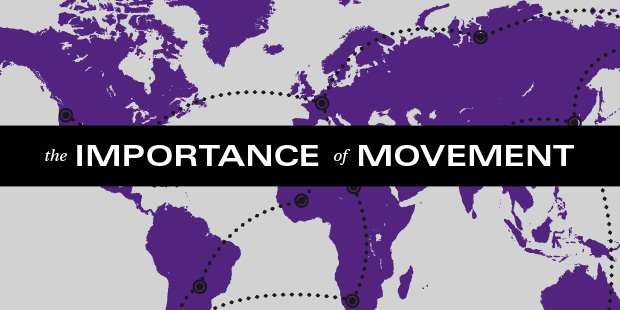
The Importance of Movement in Your Ministry
Movement is the sequential steps in the process that cause people to move to greater areas of commitment. Movement is about flow. It is about assimilation.
Movement is what causes a person to go to the next step.
Movement is the most difficult simple church element to understand; therefore, an illustration is in order.
In a relay race the most important part of the race are the handoffs. Four runners are on the same team, and each runner’s speed is crucial but not nearly as crucial as the handoffs. Relay races are won or lost at the handoffs.
Sometimes the teams with the best runners lose, and teams with the best handoffs win. You have seen it. A team is out in the lead, and then someone drops the baton during a handoff. And the team loses.
The handoffs are that important.
Movement is about the handoffs. Movement is what happens in between the programs. Movement is how someone is handed off from one level of commitment to a greater level of commitment. How a church moves someone from a worship service to a small group is movement. How a church is designed to move a person from being an observer to being a contributor is movement.
Sadly, most churches are like poor relay teams. Instead of caring about the handoffs, they are preoccupied with the programs. They pay little attention to how people are moved to greater levels of commitment. They ignore what happens between the programs.
Simple churches pay attention to the handoffs. They have grasped the truth that assimilation effectiveness is more important than programmatic effectiveness. They know that as the flow of a process increases, so does the potential that people will progress through it. Simple church leaders design a ministry process where the programs are placed as tools along the process.
Vibrant churches have a simple process that produces movement, a process that facilitates the handoffs. The programs in these churches are tools used to promote movement. The leaders focus on what happens in between the programs as much as they do the programs.
Research confirms that movement is an essential design element in a simple church. According to the data, vibrant and growing churches have already recognized the importance of movement.
Winning teams excel in the handoffs, and so do simple churches. They are experts in designing a simple process that produces movement.
To implement the movement element, church leaders must take a fresh look at the weekly church calendar and the regularly scheduled programs. All programs must be placed in sequential order along the ministry process. This is what creates movement in a ministry process.
Read more from Eric here.

Tags: Discipleship, Multiplication, Serve, Worship












